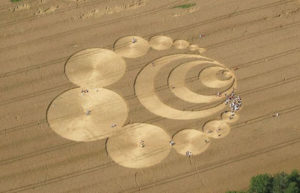The Forklift-Pallet Supremacy
Or: Hit the Road, Jack

Ground Your Lift
Forklifts weigh massively more than cars do. They are not toys. If you play with one, you're going to get hurt or die. Not that those people apt to play with them in the first place are going to listen, but at least I tried.
In all seriousness, they're one of the leading cause of serious workplace injuries in warehouses. (The leading cause of minor injuries—er, hands down—are cardboard cuts.)
An early ancestor of the forklift was a manually powered hoist that we employed to lift a load. Simple in design and easy to manipulate, it generated lift through basic mechanical advantage. Those stuck around for a while without changing much.
In 1906, though, the Pennsylvania railroad introduced battery powered trucks to move luggage at stations. These two developments quickly began converging in the years leading up to the first world war, when a labor shortage—brought on by the war and the Spanish Flu—spurred the development of early hauling tractors and trucks.
We continued to develop these over the years, and the introduction of hydraulics set the pace for modern usefulness.

I'm Inclined to Inspect
The most important piece of the puzzle, though, is one that no one blinks twice at today: the standardized wooden pallet. Skids (essentially pallets with no boards on the bottom) had existed since Ancient Egypt.
Up until the 1930s, barrels and crates remained the preferred shipping options. Pallets, however, came together with forklifts in a perfect storm, and we rapidly standardized them, along with forklift sizes. Though there are many different pallet standards today, they largely remain homogenous in any given region.
We also standardized pallet jacks. (Interestingly enough, the pallet jack dates back to 1918, making the forklift actually older than the pallet jack.) The second world war only served to cement forklifts and pallets as preeminent in shipping.
This might all seem like idle trivia, but it's actually incredibly important. We design pretty much everything in that world—from truck widths and road widths to warehouse layouts and cardboard box sizes—with the different sizes of pallets in mind.
_________
Quotable
Cheers to you, Yard Ramp Guy. May 2017 bring greater reach to your business. In the meantime…
“An optimist stays up until midnight to see the New Year in. A pessimist stays up to make sure the old year leaves.”
— Bill Vaughn
Helium-Filled Holiday Wishes
What a Gas

Zeppelin: Unleaded
The federal government has maintained a helium storage program since WWI, with the express purpose of making sure that America never falls behind in, um, a zeppelin arms race.
The Federal Helium Program is often viewed as one of the biggest boondoggles the government keeps funding. Both Reagan and Clinton tried to get rid of it. They couldn't have been more wrong, though.
Even apart from the fact that the program pays for itself with the proceeds of the helium it sells to U.S. companies, the helium program has plenty of other benefits to keeping it around.
First off, helium provides 42 percent of the nation's supply of unrefined helium gas. Second, it's already all stored in a huge porous rock formation below the Texas Panhandle, so there isn't a lot in terms of maintenance fees.
Even if we did need to harvest more, it's not that difficult. Among other things, helium is a byproduct of harvesting natural gas in the Midwest. Most importantly, helium is surprisingly essential to industries across the board.
Here's a non-exhaustive list of helium's uses:
- Airships are making a major comeback (see HERE), and they obviously need lots of helium.
- Cryogenic purposes. Not just freezing dead bodies, but cooling the magnets in MRI scanners and other similar uses. Helium makes an extremely effective coolant and is part of the process of making oxygen-hydrogen rocket fuel.
- Creating stable pressurized atmospheres. Deep sea divers often use atmospheric mixes that include helium.
- Arc welding materials that are contaminated by air or nitrogen.
- Supersonic wind tunnels.
- Gas chromatography—a method of analyzing the components of chemicals.
- As a protective gas in growing silicon and germanium crystals.
Last, and certainly not least: those party balloons that float and hug the ceiling? Filled with helium. I just bought 30 of them for my grandson’s birthday party. Birthdays just wouldn’t be as fun without helium.
_________
Quotable
Ho ho ho, Yard Ramp Guy. And all that jazz.
“Once again, we come to the Holiday Season, a deeply religious time that each of us observes, in his own way, by going to the mall of his choice.”
— Dave Barry
A Cat (and That Darn Dog)
Nothing to Tibble With

Beware of Cat
The greatest mass murderer of all time is a housecat named Tibbles.
The Stephen's Island Wren, or Lyall's Wren, was a flightless bird about the size of a sparrow that was once found throughout New Zealand. By 1894, however, it had been driven extinct everywhere but Stephen's Island. (It got over to the island during the last Ice Age, when sea levels were lower; it didn't swim there.)
The story goes that Tibbles, the cat of the lighthouse keeper on the island, single-handedly wiped out every remaining representative of the species on the island, presenting many of them as gifts to his owner. It makes a great story, since that would make Tibbles the only creature ever to single-handedly wipe out an entire species.
And yes: it's probably not true. Most experts agree that feral cats on the island were responsible. (Though Tibbles certainly helped, and he did apparently bring lots of Lyall's Wren corpses as gifts to the lighthouse keeper.)
Only about 16-18 preserved specimens of the extinct bird (minus a few bones) are known to still exist. It seems like an evolutionary oddity. There are only four other flightless songbirds ever known to have evolved, including three other species of New Zealand Wren, and all are now extinct.
Lyall's Wren is, however, important to the study of how species go extinct, as it's a very clear-cut example of extinction as caused by invasive species. (The mainland extinction was mostly caused by the Polynesian rat, another invasive species.)
So, a few important lessons here. First, introducing cats to an area with endangered animals smaller than them is a bad idea. Second, ecosystems can be very fragile; it can only take the addition or removal of a single species to disrupt them.
Third, spay and neuter your pets.
And to anyone who thinks I'd spend all this time writing a post to complain passive-aggressively about a neighbor’s dog doing something irresponsible (again)…I have no comment.
_________
Quotable
Oh, Yard Ramp Guy: here’s a helpful quote for when your customers are trying to choose:
“Man selects on for his own good: Nature only for that of the being which she tends.”
— Charles Darwin
Landing Instructions
Or: You Traveled a Gazillion Miles to Earth & Left Us Some Stones?

Whoa.
I'm convinced that there are aliens out there somewhere, but I'm equally convinced they haven't visited us yet.
There was a book called Chariots of the Gods? written by a hack named Erich von Däniken in 1968 that claimed the aliens visited us in ancient times and were responsible for the construction of the pyramids, Stonehenge, the stone heads of Easter Island and others.
The book was extensively rewritten by its final editor, Wilhelm Utermann, who had been a bestselling Nazi author. The book also claimed that the Old Testament, other ancient religious documents, and countless other folktales and legends were also inspired by visits from aliens in ancient times.
The key to the book's claims of aliens constructing various ancient wonders revolved around the idea that the wonders were far too technologically advanced to have been built by ancient peoples. That's just plain wrong. (I wrote about how the pyramids were built—in my first ever blog post.)
Every single one of von Däniken's claims of that nature can be rebutted fairly easily. Simply put, our ancestors were incredibly smart and innovative.
Unfortunately, von Däniken's ideas are still floating around in the form of that, ahem, television show “Ancient Aliens,” and it still relies on the ridiculous idea that our ancestors couldn't build anything on their own.
For example, crackpot theorists frequently claim that the Nazca lines are landing instructions for aliens. I’d say the aliens would’ve developed better methods for setting up landing strips. (Not to mention that the terrain around the Nazca lines would have made terrible landing strips. Landing on or near the lines would have utterly wrecked the delicate constructions.)
Also, if aliens had visited us in ancient times, do you think they could have given us better gifts than big stone monuments? You know, like plumbing, the germ theory of disease, democracy? Even just some nice farming tips?
Oh, yes, and I hope you had a happy Thanksgiving.
_________
Quotable
Oh, Yard Ramp Guy: I hear—and choose to ignore—your challenge for a holiday-relevant Thanksgiving quotation. Me, I remain blog relevant.





